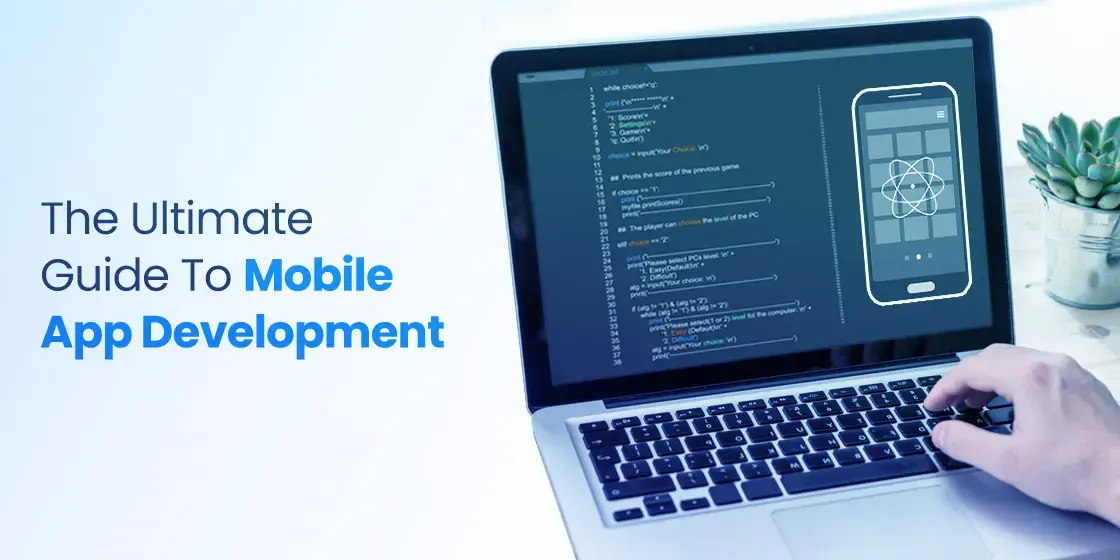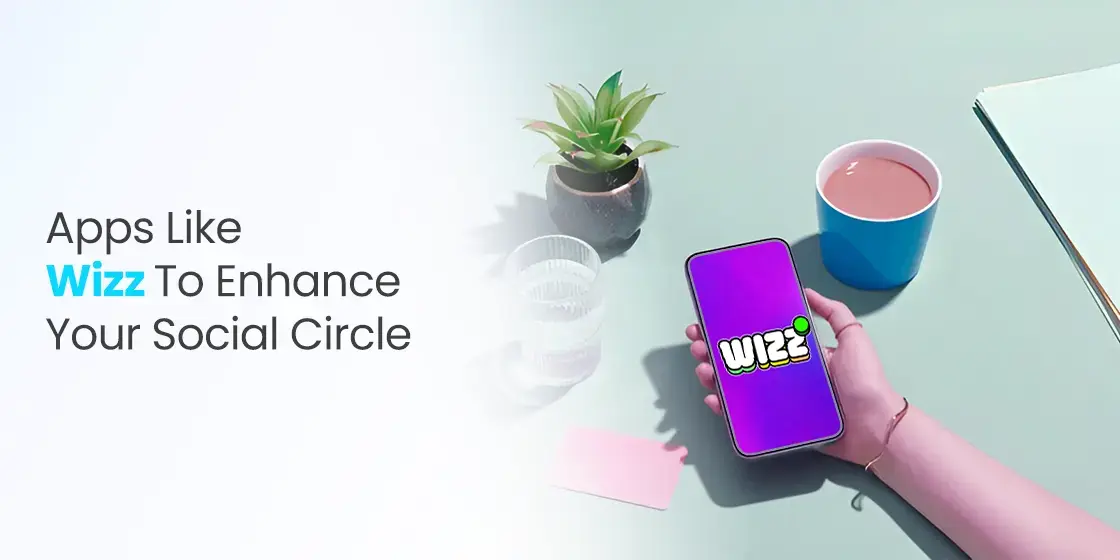Table of Content
Take a Look at the Complete Process of Mobile App Development from Start to Finish
It is being said that the future of technology is connected to the advancement of mobile applications. Due to this, businesses around the world are shifting their focus towards mobile app development. They understand that majority of people prefer to use mobile apps because it provides convenience to access everything quickly. This has presented tons of opportunities for software developers to get connected with these companies and build quality apps for their businesses.
But, to create mobile apps, developers need to first work with the basics of app development. This is termed necessary because mobile app development involves a lot of technicalities which definitely requires good understanding of the basics. Having a sound knowledge of all these rules and principles is important, as they come handy in different stages of development. Being a beginner, you need to pay attention on learning them first, because these points help you to build a strong base.
In this comprehensive guide of mobile app development for beginners, we will look into this topic in detail. We will discuss about the process, defining which coding languages for app development are best for beginners. Let us first start with an overview below how the app development process for beginners work, and what type of stages are involved in it.
Mobile App Development Process for Beginners Overview
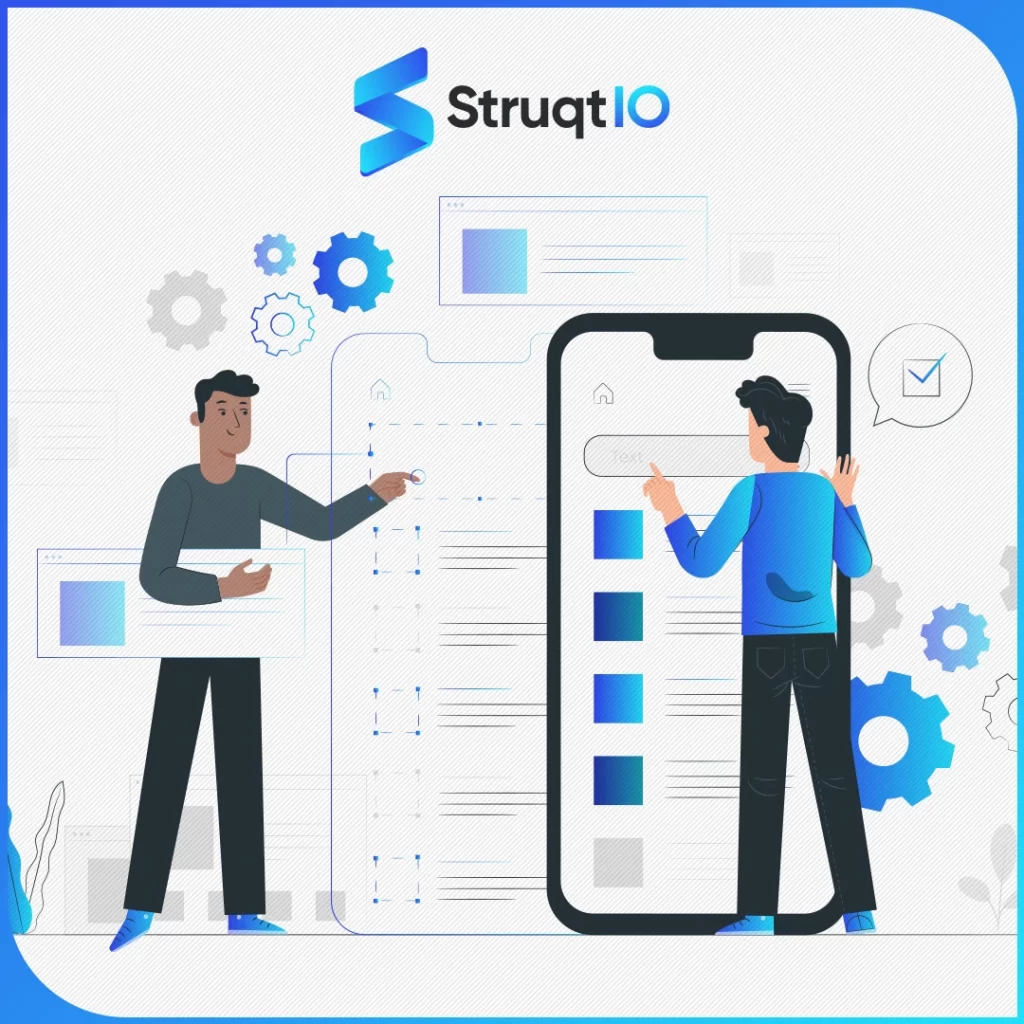
Before starting mobile app development, you need to know about the process properly. A lot of times, beginners do not pay attention to this basic principle. They do not understand how the development process or cycle works. This does not help them to move forward, as partial knowledge is simply not enough to build any mobile application. This is one of those points that should be remembered for other types of development because it is the basic prerequisite of everything.
Talking about mobile app development process for beginners, it involves various stages and phases. It is recommended to learn and follow them properly, as that helps to develop a mobile app as per the industry standards. Taking a quick view, the process usually starts from ideation, then it moves on towards research and then later to the development phase. There are some sub stages also involved in between these phases which we will discuss below in this mobile app guide.
So, if you are a beginner, looking to develop a digital banking app like Mashreq Neobiz, you need to pay attention on this process first. You need to understand how it runs and what type of things are required in it. This will allow you to start any project with a complete plan, no matter how big or complex it is. This detailed mobile app guide will certainly prove to be a good read for you, as it will take the step by step approach to let you understand the whole mobile app development process efficiently.
Mobile App Development for Beginners: Choosing the Right Platform
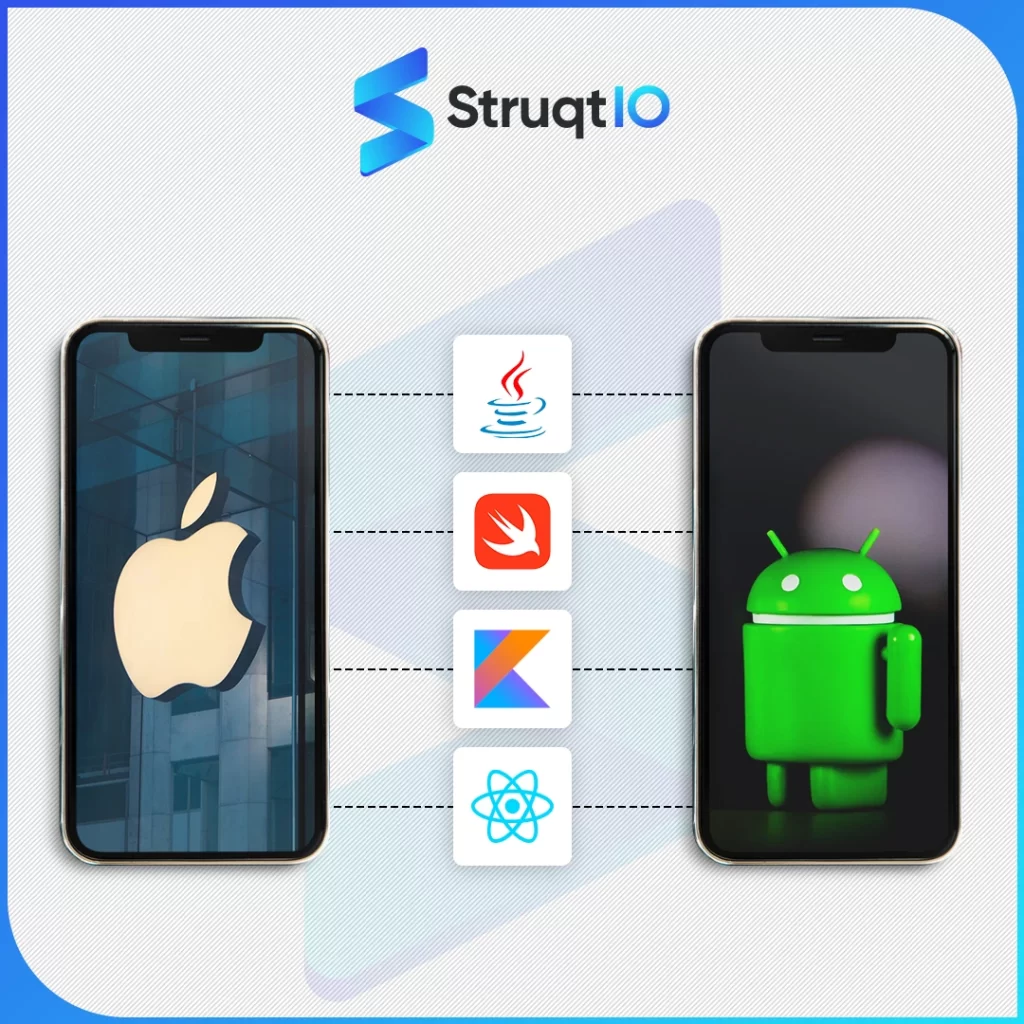
To create a mobile application, you need to first decide the platform of development. We all know pretty well that Android and iOS are the two main platforms on which most applications are built. So based on your requirements, you have to pick anyone of them. You can also go for both if you are planning to build a hybrid application. The structural process for both usually remains the same, hence you need to learn the basics of mobile application development on both platforms.
iOS App Development
With the ever-growing popularity of iOS devices, understanding iOS app development has become a highly sought-after skill in today’s digital landscape.
Overview of iOS Development
iOS development refers to the process of developing applications for Mac and iOS-based platforms. It is one of the most in-demand fields of development, because many people use iPhone and other Apple devices on routine basis. Therefore, creating applications for these devices is considered important, as they allow businesses to engage with a huge section of customers socially.
To develop quality iOS applications, you need to follow the basics of mobile application development containing different phases. Besides that, you need to have a good knowledge about latest trends, as that gives you an edge to create up-to-date iOS applications. Similar process is also required for Mac applications, as they are also connected to the same development platform.
iOS Development Tools and Technologies
Being an app developer, you need to know about the latest tools and technologies that are used for iOS app development. Nowadays, there are plenty of tools available in the market, so as a beginner, you cannot focus on all of them at once. It is best advised to consider those at the start that can help to build your basics of app development. This could include tools like programming IDEs, testing and debugging platforms and more others.
As per the current market stats, Xcode is the most popular tool that is used for iOS app development. It is a very powerful IDE that helps to build and debug iOS applications efficiently. Besides that, there are some other tools as well that are widely used for iOS development such as CocoaPods, TestFlight, AppCode and more others.
Swift vs. Objective-C: Selecting the Programming Language
To develop a mobile app, you need to first get a good grip on a relevant programming language. This is important because without strong coding skills is required to develop mobile applications. In the case of iOS applications, there are two programming languages that are vastly used for development – Swift and Objective-C. Both of these languages are quite advanced, which is why they are termed perfect iOS app development.
Considering mobile app development for beginners, you can choose anyone of these languages at the start of development. It is recommended to build a base first on a particular programming language. Comparatively, Swift is considered faster than Objective-C. The runtime of Swift is also slightly better than latter, hence you can start with Swift while being on the initial level.
iOS App Development Guidelines and Best Practices
To develop a quality iOS application for Apple smartphones, you need to follow some basic guidelines and rules.. These are considered important for mobile app development for beginners because they allow you to work with a specified approach. Those who do not pay attention to these guidelines, often struggle to handle different critical tasks. The reason is that some processes in the app development runs into loop, hence a proper knowledge of the development method is required to handle them.
As per the best industry practices, you need to first do the research properly. Afterwards, you need to pick a UI design theme that looks simple and easy to the eye. Then, moving on, you can start the app development process knowing all the core requirements and objectives of the iOS app.
Android App Development
In a world where mobile devices reign supreme, Android app development has become an essential skill for those looking to make their mark in the tech industry.
Overview of Android Development
Android development as we know refers to the development of Android applications. It is also an in-demand field due to the rising usage of Android phones in the market. From Europe to Asia, the numbers of Android users are growing day by day, hence companies are looking to engage with them by developing unique mobile applications.
Just like iOS development, the app development process for beginners remains the same in Android app development. These are basically the general rules that can be used for all types of mobile app development. The method of ideation, research and development follows the same process, hence it is easy for app developers to adjust quickly between the two platforms.
Android Development Tools and Technologies
When starting an android development project, you need to assemble the tools stack very wisely. This is an important task that should be done keeping the requirements of your project in mind. You don’t have to pick every Android IDE or testing platform to kick off things initially. You can go only with those basic tools that are recommended for Android development, such as Xamarin, React Native, Flutter and more others. The future of Flutter development for Android is seen quite bright, as it offers various advanced features to develop an app efficiently.
Using these top rated dev tools, you can create different types of Android applications on the go. They are built to offer convenience, so that mobile app development for beginners can become a bit easy. These tools certainly require a good technical knowledge, so make sure to build your basics of app development before using them.
Java vs. Kotlin: Selecting the Programming Language
Java is a renowned programming language in the dev world. Apart from desktop applications, it is also being used for Android app development. The reason why developers love this language is its wide area of functionality. Furthermore, it also provides range of advanced dev features that helps to create seamless backend for Android mobile applications.
Besides Java, Kotlin is also used for mobile app development. But, it is highly advanced, offering a range of features and functionalities in the framework. Many people ask which language should be used for Android development, well, we’d recommend both platforms for high quality results.
Android App Development Guidelines and Best Practices
To design an Android application, you need to follow some specific guidelines. They are recommended because they allow you to build applications with a proper plan. If you will not follow them, then you could face different sorts of problems during the development phase. So considering mobile app development for beginners, it is always recommended to follow best practices while developing projects, as they ensure quality results in the end.
Speaking about basics of app development, the process starts from a comprehensive research. Then, you need to strategize the development plan to keep things streamlined. Afterwards, you can run into the development phase with the required tools and technologies. This is indeed a basic, yet very useful approach to build quality Android applications.
Planning and Designing Your Mobile App
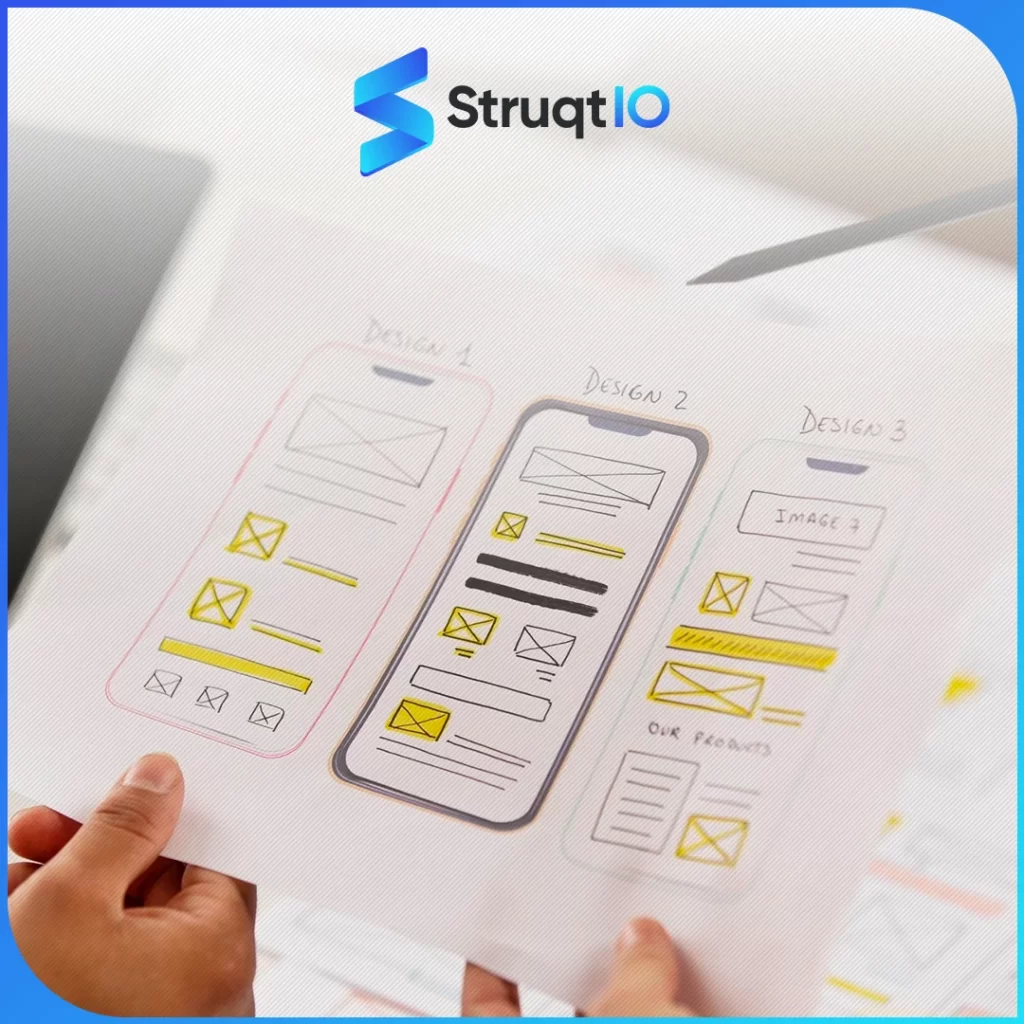
Mobile applications cannot be developed with a random plan. They require rigorous thinking and a forward-looking approach to offer desired results. That is why it is recommended to plan every stage of the development in prior, so that you can focus on quality execution while approaching every phase.
Defining App Goals and Objectives
The goals and objectives for mobile app development can vary depending on the specific app and the needs of the business or organization that is developing it. Mobile apps can provide a more personalized and interactive experience for customers, which can lead to increased engagement and loyalty. This is indeed a key metric that is always defined in all types of mobile app development projects.
Besides that, mobile apps can also help businesses and organizations improve productivity and efficiency by providing employees with access to information and tools on the go. For example, a CRM app could allow technicians to access customer records, view blueprints, and track their work progress from their mobile devices in real time. These type of objectives are also set in different projects to make them fully useful for customers.
Understanding the Target Audience and User Personas
Understanding your target audience and personas is essential
for creating a successful mobile app. By understanding who your users are, what their needs are, and what their pain points are, you can create an app that is relevant and useful to them. Considering mobile app development for beginners, it is best recommended to conduct detailed market research to understand the requirements of people, especially that are your target audience
This can be done by surveying potential users, interviewing them, or analyzing data from social media and other online platforms. The goal is to gather as much information as possible about your target audience, including their demographics, interests, needs, and pain points.
Mobile App Wireframing and Prototyping Tools
Mobile App Wireframing and Prototyping Tools are essential for designing and testing the usability and functionality of mobile apps before they are fully developed.
Wireframing Tools Overview
Considering mobile app development for beginners, wireframing tools are essential to draw a first visionary illustration of an app. They allow designers to quickly and easily create low-fidelity prototypes, which can be used to test the app’s usability and functionality before it is developed in principle.
Prototyping Tools Overview
Prototyping tools are used to create interactive prototypes of mobile apps. They allow designers and developers to test the app’s usability and functionality before it is developed in full. Considering mobile app development for beginners, this concept comes pretty handy, as it helps to identify potential problems that reside deep inside the application’s code.
User Interface (UI) and User Experience (UX) Design Principles
Creating an intuitive and visually appealing interface that meets the needs and solves the problems of the users while ensuring a seamless and enjoyable experience.

UI Design Best Practices
There are various things you need to keep in mind while creating a mobile app UI design. First of all, you need to use a consistent design language. Then, you need to keep the visuals simple and focus on the most important elements of the design. Similarly, you need to use the whitespaces properly, as it is also considered important to keep the UI design clean.
UX Design Best Practices
The first step to good UX design is to understand your users. Once you understand your users, you can start to design an app that meets their needs and solves their problems. Ideally, the user interface should be clear and concise, and the navigation should be intuitive. Furthermore, a consistent design theme should be used throughout app, from the colors to fonts and button to icons. This is a key concept in every mobile app guide, as it helps to make your app look more professional and catchy.
Mobile App Development Lifecycle
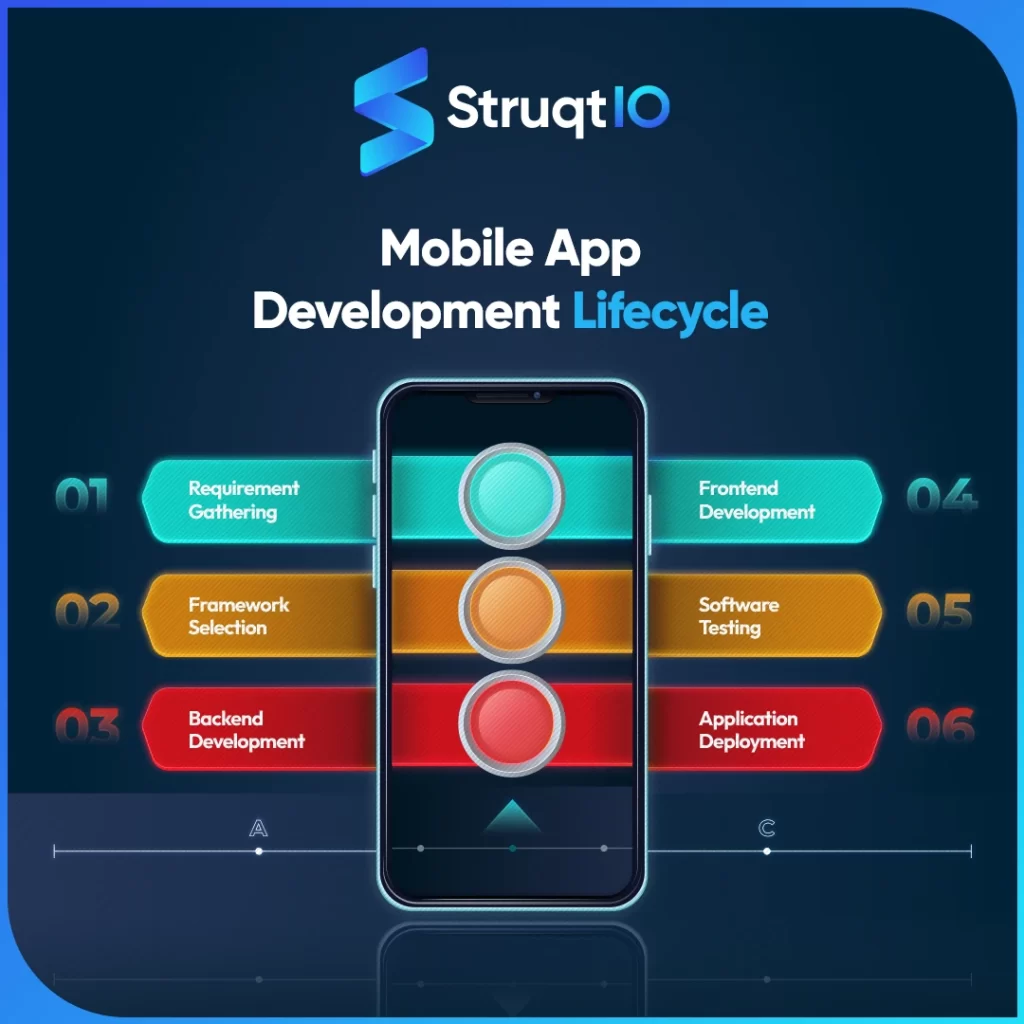
Before starting to work on any mobile app project, you need to first understand the overall development lifecycle firmly. It is important because this understanding helps to plan every phase or stage in a preemptive manner. It gives you a pathway from start to finish that precisely helps to build a strategy for quality mobile app development.
Requirement Gathering and Analysis
Requirement gathering and analysis is important in the overall strategy designed for mobile app development for beginners. This process is essential to ensure that the app meets the needs of its users and is successful. By gathering and analyzing requirements, the development team can ensure that the app is built with the user in mind. This will help to increase the chances of the app being successful.
If the development team does not understand the requirements of the app, they may make costly mistakes. For example, they may build features that the users do not need or want. This can lead to wasted time and money, taking all the project efforts into vain.
Architecture and Framework Selection
The architecture and framework selection are two of the most important decisions that a mobile app development team will make. The architecture of an app determines how the app is structured and how the different components of the app interact with each other. The framework is a set of tools and libraries that the development team will use to build the app.
The architecture and framework selection are important because they can build a significant impact on the strategy of mobile app development for beginners. It can help to scale the applications whenever needed, and can also provide key tools to improvise different features already built in the mobile application.
Backend Development and API Integration
Discover the power of API integration and how it opens a gateway to a world of limitless possibilities in mobile app development, as we explore how APIs can seamlessly integrate third-party services into your app.
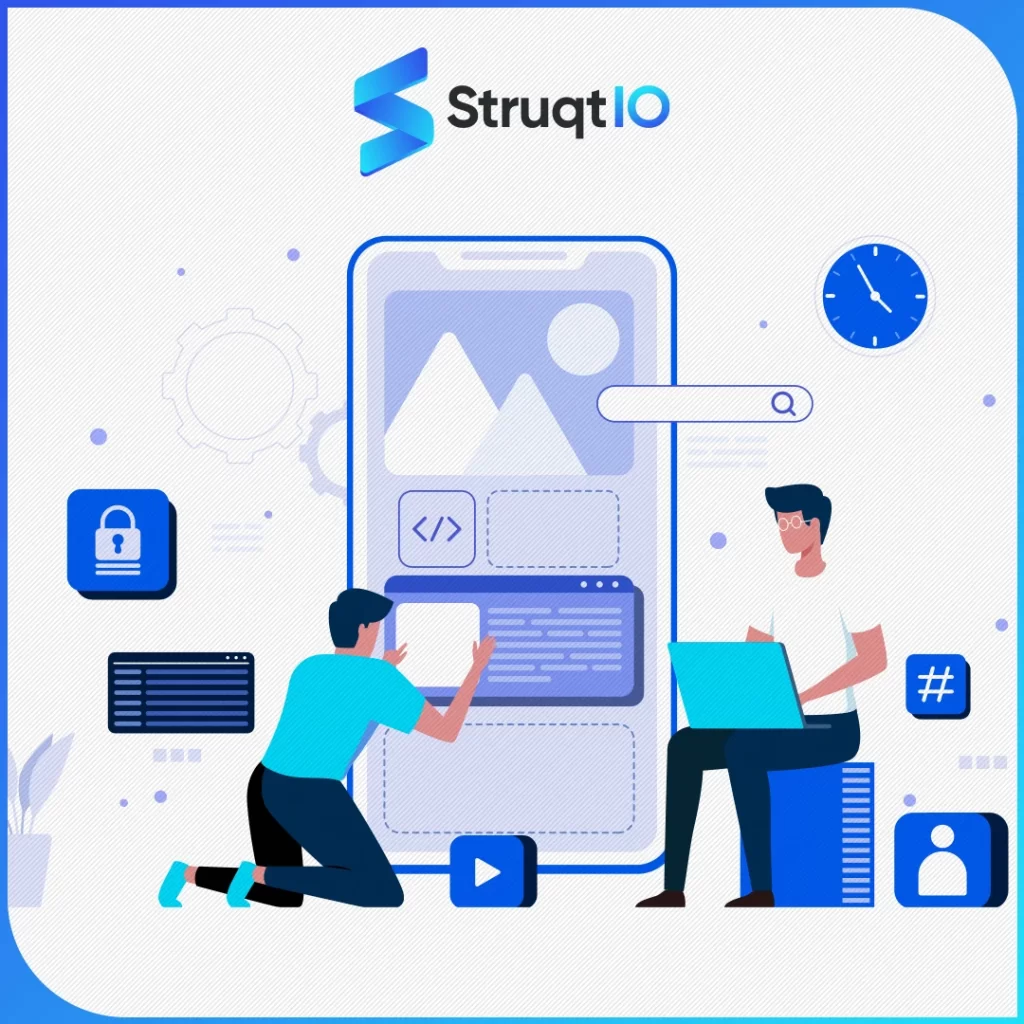
Choosing the Right Backend Technology
Next up, we have got the key stage of backend development. To do that, you need to pick a backend development platform that can fulfil your project needs. Considering mobile app development for beginners, this is one of those phases in which in-depth technical skills are required to do the job. There is simply no room for error in backend development, as all the application functionality and performance depends on it.
Integrating APIs and Third-Party Services
Every mobile app developer should also know about API integration in detail. The reason is that there are various features in the application that needs third-party support. So, having a good knowledge about API integration is important, as it could help you to work with third-party tools efficiently.
Frontend Development and UI Implementation
User Interface (UI) design is the art of creating visually appealing and intuitive mobile app interfaces that captivate users and enhance their overall experience
Implementing User Interfaces
It is being said that user interface is the key to attract people’s attention. This fact fits well for both websites and mobile applications. Talking about mobile app development for beginners, it is important to pay attention on designing creative user interface that can make the app look different from others. Meanwhile, keep in mind to design all the user interface elements carefully, as their interconnectivity is itself an important task in this phase.
Incorporating Navigation and User Interaction
A user interface should always be designed with a proper navigation system. It is the key thing that helps users to switch from one tab to another to find different types of information. Considering mobile app development for beginners, it is best advised to design the navigation menus and tabs keeping the user interaction in mind. This will help you to perceive ideas according to the users’ mindset which is indeed very important.
Testing and Quality Assurance
Mobile app testing and quality assurance play a critical role in ensuring that apps function flawlessly, meet user expectations, and maintain a high level of performance in the ever-evolving mobile landscape.
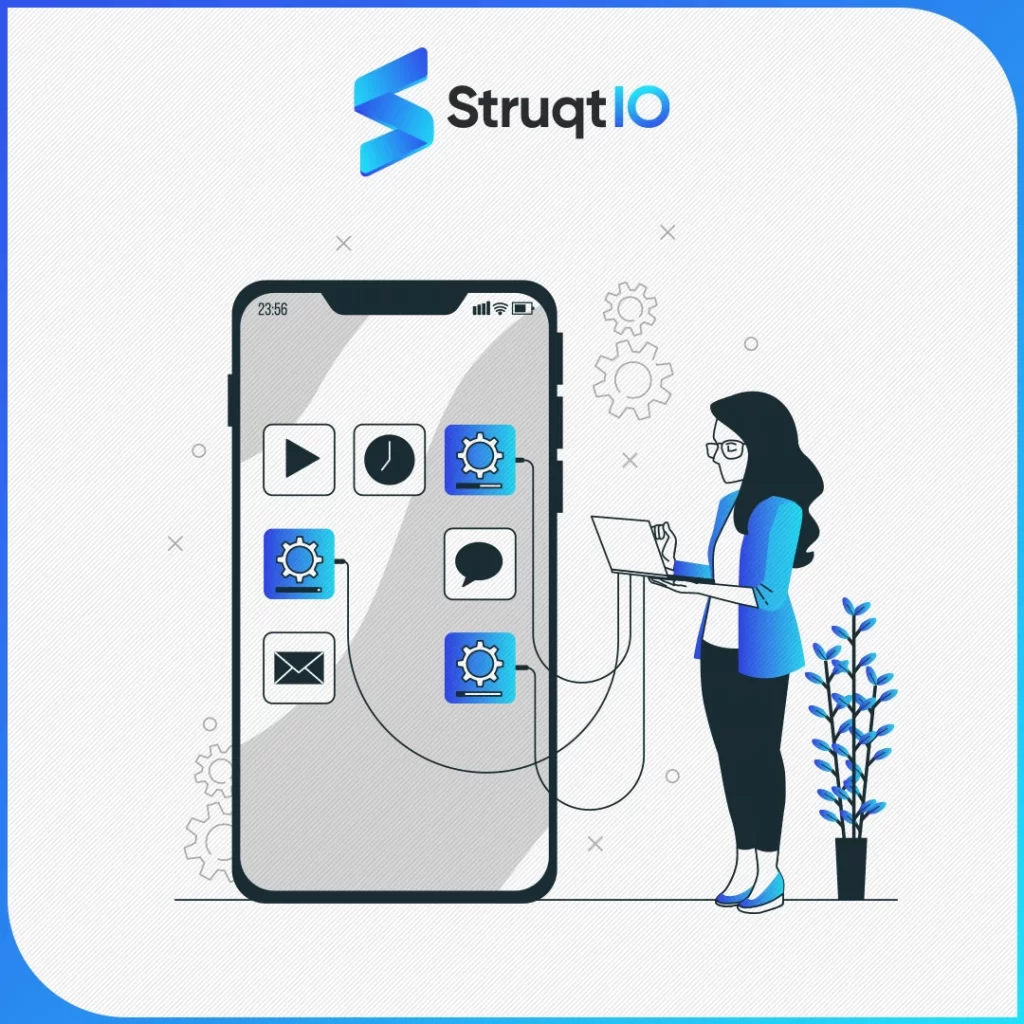
Types of Testing in Mobile App Development for Beginners
Testing is an important part of the overall concept of mobile app development for beginners. As per the current procedures, there are many specialized types of software testing that can be performed on mobile apps. From functional to compatibility testing and security to performance testing, there are various methods with which you can check the efficiency of the application in this critical stage.
Test Automation and Continuous Integration
Test automation is the process of using software to execute tests automatically, without human intervention. On the other hand, Continuous integration (CI) is a development practice where developers integrate their code into a shared repository frequently. Test automation and CI are often used together in a CI/CD pipeline. A CI/CD pipeline is a set of automated processes that help to build, test, and deploy software continuously.
Deployment and App Store Submission
As the journey of mobile app development for beginners nears its completion, it’s time to explore the intricacies of app deployment and app store submission, where developers navigate the process of making their apps available to millions of users worldwide.
Preparing for App Store Submission
Moving into the final stages of mobile app development, we start the deployment process on the app store. For Android, it would be done on Google Play Store, and for iOS, it would be done on Apple Store. Make sure to first read the guidelines before submitting your application on one of these platforms. There are various points that should be kept in mind while submitting the project on Play Store. If your app will not fit to their requirements, then the submission will be automatically denied.
Deploying App Updates and Versioning
As the journey of mobile app development for beginners nears its completion, it’s time to explore the intricacies of app deployment and app store submission, where developers navigate the process of making their apps available to millions of users worldwide.
Essential Mobile App Features and Functionality
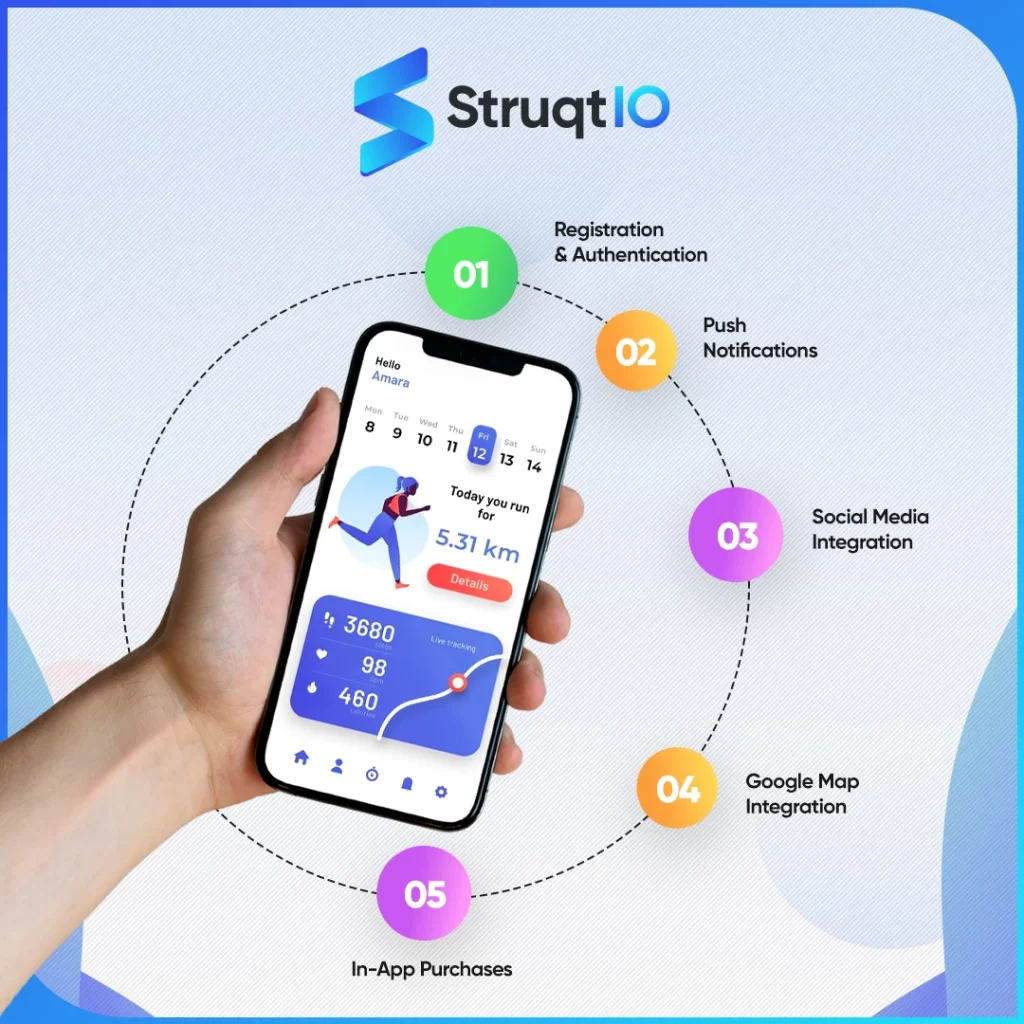
It is a known fact that only those mobile apps work in the market that offer plethora of features. It should be noted here that these features should fulfil the demands of the customers, otherwise there is no point of developing any application. From banking to building an ecommerce app like Namshi, every app should be built keeping the user perspective in mind, as they are the real assets of any company.
Considering mobile app development for beginners, there are some less complex features that should be present in all types of mobile applications. If you do not know what these features are, take a look at the list given below.
User Registration and Authentication
User registration and authentication features are important because they help to register and authenticate users before they can access the app. This is especially important for apps that store sensitive user information, such as financial data or medical records. Once a user has registered and authenticated, the app can be personalized to their individual needs and preferences. This can make the app more user-friendly and engaging.
By requiring users to register and authenticate, developers can help to prevent fraud, such as unauthorized purchases or account takeovers. In short, user registration and authentication features are important for mobile apps because they help to protect user data, personalize the user experience, track user behavior, prevent fraud, and comply with regulations.
Push Notifications and In-App Messaging
Both push notifications and in-app messaging features are considered important in mobile app development for beginners. They provide administrators a unique way to communicate with the users of mobile applications. Push notifications are messages that are sent to users even when they are not using the app. They are typically used to deliver time-sensitive information, such as news alerts, appointment reminders, or new product releases.
In-app messaging are messages that are displayed within the app itself. They are typically used to provide support or guidance to users, such as how to use a particular feature or troubleshoot a problem. Both of these features should be present in every type of commercial mobile application, as they offer a solid liberty to hook the attention of users instantly.
Social Media Integration
Social media integration is the process of allowing users to connect their mobile app to their social media accounts. This can be done for a variety of purposes such as allowing users to login through app by entering their account credentials. It also allows users to share content from your app to their social media accounts, which precisely helps to promote your app and increase its visibility in the market.
With the help of social media integration, users can communicate with each other through app’s in-built features, such as chat and messaging. This can help to build a community around your app, encouraging users to come back for more.
Geolocation and Maps Integration
Geolocation and maps integration is a feature that allows mobile apps to access and display geographic data. This can be used for a variety of purposes such as tracking real-time location, pinpointing position and more others. This feature is recommended most for online grocery or food delivery apps, as it effectively help the store riders to find delivery places in real time.
Besides that, geolocation and maps integration can be used to visualize geographic data, such as weather maps, traffic maps, and crime maps. Furthermore, if you want to go a bit advanced, it can also be used to offer VR experience, similarly like Pokemon Go and other popular apps.
In-App Purchases and Monetization Options
In-app purchases and monetization options are features that allow mobile app developers to generate revenue from their apps. There are a variety of different in-app purchase and monetization options available, including freemium, subscription, ad-based and more others. These features come in really handy for specialized services app, like music streaming, online VPN and other mobile applications.
In-app purchases and monetization options can help you to generate revenue from your app, which can help to offset the cost of development and marketing. In every mobile app guide, these features are highly recommended, especially if the project is related to the ecommerce sector.
Offline Functionality and Caching
As per the standard mobile app guide, offline functionality and caching are two features that can be used to improve the performance and usability of mobile apps. Offline functionality allows users to use an app even when they do not have an internet connection. This is important for apps that need to access data or perform tasks that require an internet connection, such as maps, games, and productivity apps.
On the other hand, caching stores data locally on the device, so that it can be accessed faster and without using network resources. This can improve the performance of apps, enabling various functions to run more faster gradually.
Performance Optimization and User Experience Enhancement
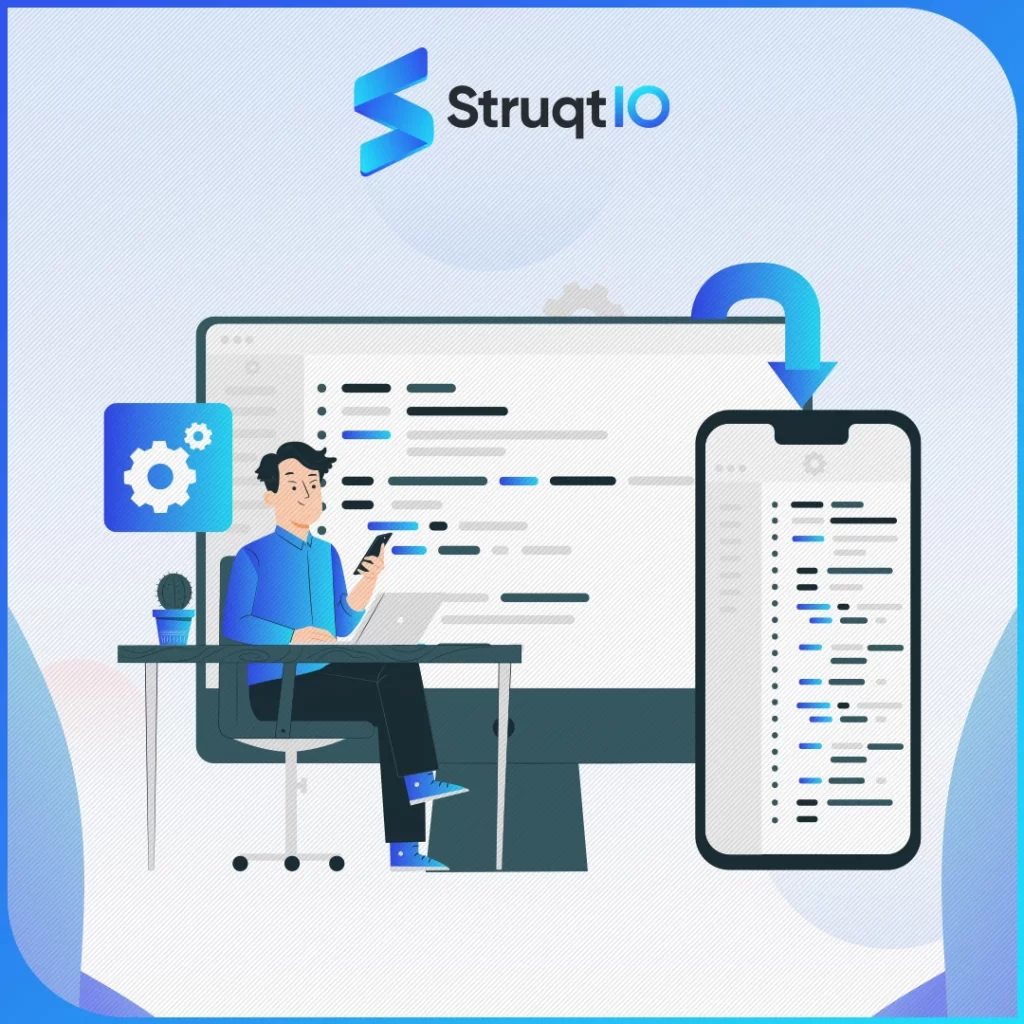
Being a developer, everyone understands how important it is to optimize the performance of any mobile application. But to do that, there are some technicalities that needs to be understood in prior. If you do not know what these things are, take a look at the key points defined below.
App Performance Optimization Techniques
Though mobile app development for beginners is not easy, it is still quite important to build an application with zero downtime and fast performance. There are some techniques that allow you to build such apps, and they are not that difficult as well. First of all, avoid using heavy libraries, plugins, third-party APIs and frameworks that can slow down your app. Instead, use lightweight libraries that are specifically designed for mobile apps.
Secondly, try to minify and optimize your code properly. Minifying your code removes unnecessary whitespace and comments, which can make it smaller and faster. You can also use a code optimizer to further improve the performance of your code. This technique is not just recommended for the development of mobile apps, but for websites and desktop apps as well.
Memory and CPU Usage Optimization Strategies
Greater memory and CPU usage can bring a heavy toll and negative impact on the performance of your mobile applications. It is best advised to reduce that by using some smart strategies of memory optimization. Firstly, try to use a memory profiler to identify memory leaks. A memory profiler can help to track down inefficiencies and fix memory leaks in your app code.
Similarly, you need to use efficient data structures to make information extraction easy and fast from the database. You can also use caching technique to reduce memory usage by storing frequently accessed data in memory. This can reduce the number of times your app needs to read data from disk, which can improve performance.
Network Communication Optimization
Network communication optimization is important in mobile apps because it can help to improve the performance of your app and provide a better user experience. It can help to reduce the loading time of your app by caching data and resources closer to the user. This can make a big difference in the user experience, especially for apps that rely on a lot of data or resources.
Furthermore, Network communication optimization can help to reduce latency by using more efficient protocols and transport mechanisms. This can make your app feel more responsive and make it easier for users to interact with it. This is indeed a key metric that helps to make your mobile app performance standout among others.
Implementing User Analytics
In every mobile app guide, it is recommended to implement user analytics due to a number of reasons. It can help you to understand how users are interacting with your app, and what type of features they are liking the most. For example, you can use analytics to track which features are most popular, which pages are most visited, and how long users spend in your mobile app.
Analytics can also help you to identify bugs and errors in your app. You can use analytics to track crashes, exceptions, and other errors. This information can be used to fix bugs and errors in your app, which will improve the quality of your mobile app and make it more reliable.
Mobile App Security and Data Privacy
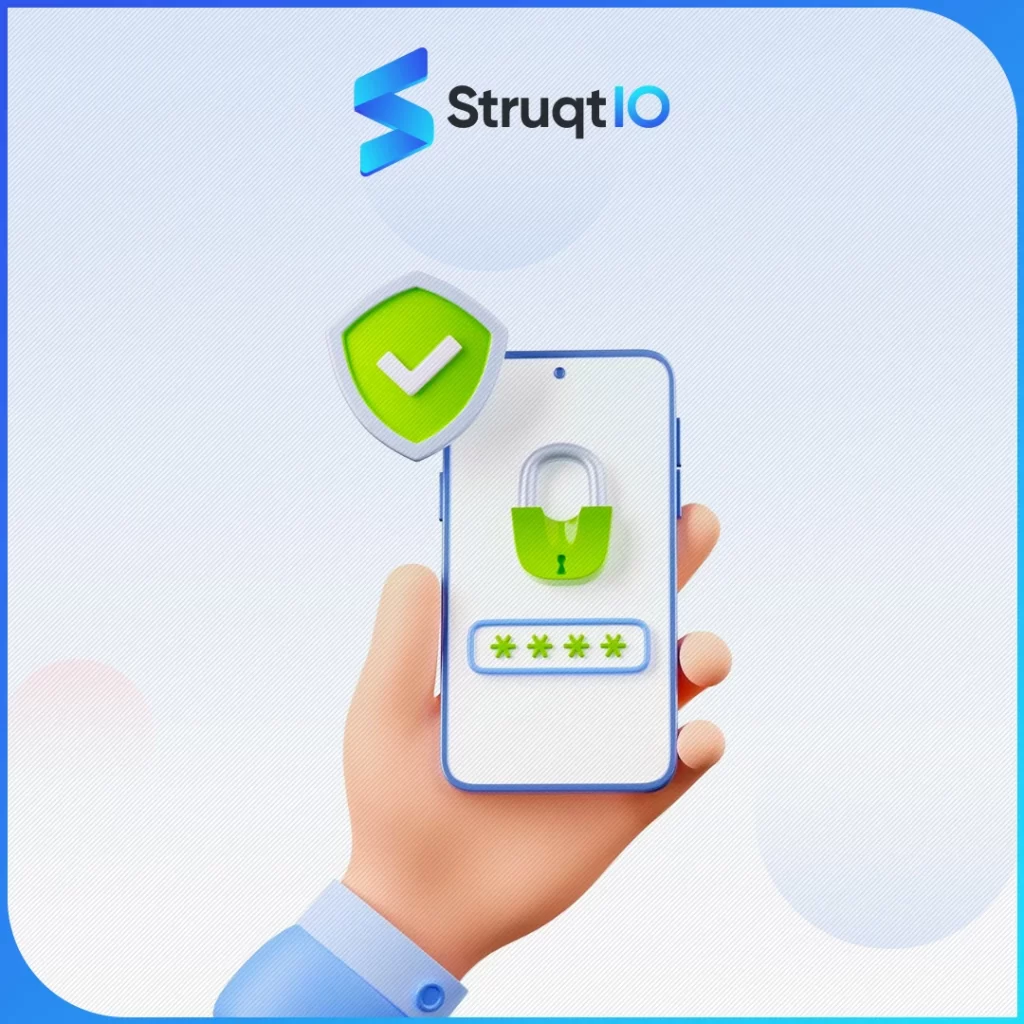
Mobile app development for beginners can be a bit difficult, but still it is their core responsibility to build a mechanism that can protect all the data of the application. Some companies also hire specialized web security consultants to do this job, but in an ideal scenario, you should be able to handle all these things on your own. If you do not know which practices should be followed for app security and data privacy, take a look at the points defined below.
Data Encryption and Storage
Data encryption plays a key role in protecting the sanctity of sensitive data. The most commonly used encryption algorithms for mobile apps are AES (Advanced Encryption Standard) and RSA (Rivest–Shamir–Adleman). These algorithms are considered to be very secure and should be used to encrypt sensitive data such as passwords, credit card numbers, and personal identification numbers (PINs).
Now coming to the storage, you should always try to minimize the amount of sensitive data that is stored on the device. Only store the minimum amount of sensitive data that is necessary for the app to function. This will reduce the risk of the data being compromised if the device is lost or stolen.
Secure Authentication and Authorization
Secure authentication is an important part of app security, because it gives access to only specified individuals. Generally, app administrators use passwords to allow security authentication, but they are not always secure. It is best advised to use multi-factor authentication (MFA) to add an additional layer of security in mobile apps. MFA requires users to provide two or more pieces of identifying information, such as a password and a code from their phone, to authenticate themselves.
As per the standard mobile app guide, you can also use HTTPS to make the security of the mobile app stronger. HTTPS (Hypertext Transfer Protocol Secure) is a secure protocol that encrypts data in transit. This helps to protect data from being intercepted by unauthorized parties.
Secure Network Communication
To build a secure network communication, you need to pay attention on some key points. First of all, you need to use a secure transport layer. The transport layer is responsible for transferring data between the app and the server. A secure transport layer, such as TLS (Transport Layer Security) or SSL (Secure Sockets Layer), should be used to encrypt data in transit. It is the most recommended method defined in different mobile app guides, hence you need to incorporate it in your routine practices.
Secondly, try to use a secure API whenever you are required to add any third-party feature in the app. This API should use HTTPS and a secure transport layer to send/receive data from external sources. This practice should be strictly followed while developing ecommerce apps, as they usually require integration of third-party features.
User Data Privacy Compliance
As stated in every mobile app guide, user data privacy compliance is important in mobile apps because it protects the privacy of users and their personal data. Mobile apps collect a lot of personal data from users, such as their name, address, email address, phone number, social media profiles, and financial information. This data can be used to track users, target them with ads, and even commit identity theft.
By complying with user data privacy regulations, mobile app developers can help to protect users’ privacy and prevent their personal data from being misused. Considering mobile app development for beginners, this is a very basic principle that should be followed for all types of projects involving user data.
Understanding Mobile App Development Cost
Having a good understanding of the cost associated with mobile app development is quite important for project stakeholders. There are a lot of things involved in the mobile app development that influences the overall cost of the project. It is necessary to know about them before starting the project, so that you can build a better estimate about the cost. Let’s take a quick look at those factors in detail below.
App Complexity
A key determinant in the overall cost of an Android app development project is the complexity of the product being created. The level of complexity directly impacts various aspects of development, such as the time required to build features, the number of developers needed, and the use of advanced technologies. Complex applications with intricate functionality naturally demand more resources and time, which ultimately increases the cost.
Addressing the complexity of the app is crucial early in the development process. During the initial planning phase, the client and development team collaborate closely to ensure there is a shared, comprehensive understanding of the product’s scope and technical requirements. This mutual agreement helps avoid misunderstandings later in the project, aligning both parties on expectations regarding the app’s features, design, and functionality.
Type of Application
The type and purpose of a mobile app significantly influence the overall budget of the project. When an application is developed for a large-scale enterprise, it tends to be more complex and feature-rich. Enterprise apps often include advanced functionalities such as data analytics, user management, or seamless connections with third-party services, all of which demand more development time and expertise.
On the other hand, mobile apps designed for smaller businesses with simpler needs tend to have a more streamlined feature set and fewer complexities. These apps often focus on basic functionalities such as user engagement, product listings, or simple customer interaction tools. With fewer advanced features, less customization, and reduced infrastructure requirements, the development process becomes quicker and more cost-effective.
Technology Selection
The selection of platforms used in mobile app development is a major factor that influences the overall cost of the project. Different platforms require distinct development approaches, which can affect both the complexity and duration of the development process. For instance, building a native app for Android, iOS, or both platforms may necessitate separate development teams skilled in platform-specific languages like Kotlin for Android and Swift for iOS, which can increase the project’s cost.
Beyond platform selection, the choice of coding languages and development frameworks also plays a critical role in determining the app’s cost. With various technologies available, such as native development, hybrid frameworks like React Native, or cross-platform tools like Flutter, selecting the most suitable technology stack is essential.
Origins of Development Team
The geographic location of developers is a critical factor that greatly affects the overall cost of a mobile app development project. Developer rates can vary significantly depending on their region, with developers from countries with higher living costs often charging premium rates for their expertise. For instance, developers based in North America or Western Europe typically have higher hourly or project-based fees compared to those in regions such as Eastern Europe, Asia, or Latin America.
In addition, the rise of remote work has allowed freelance developers to strategically position themselves in the global marketplace, offering their services at competitive rates based on their geographic location. Many experienced freelancers with specialized skills may reside in regions with a lower cost of living, enabling them to provide high-quality services at lower prices than developers in more expensive markets.
Mobile App Maintenance and Updates
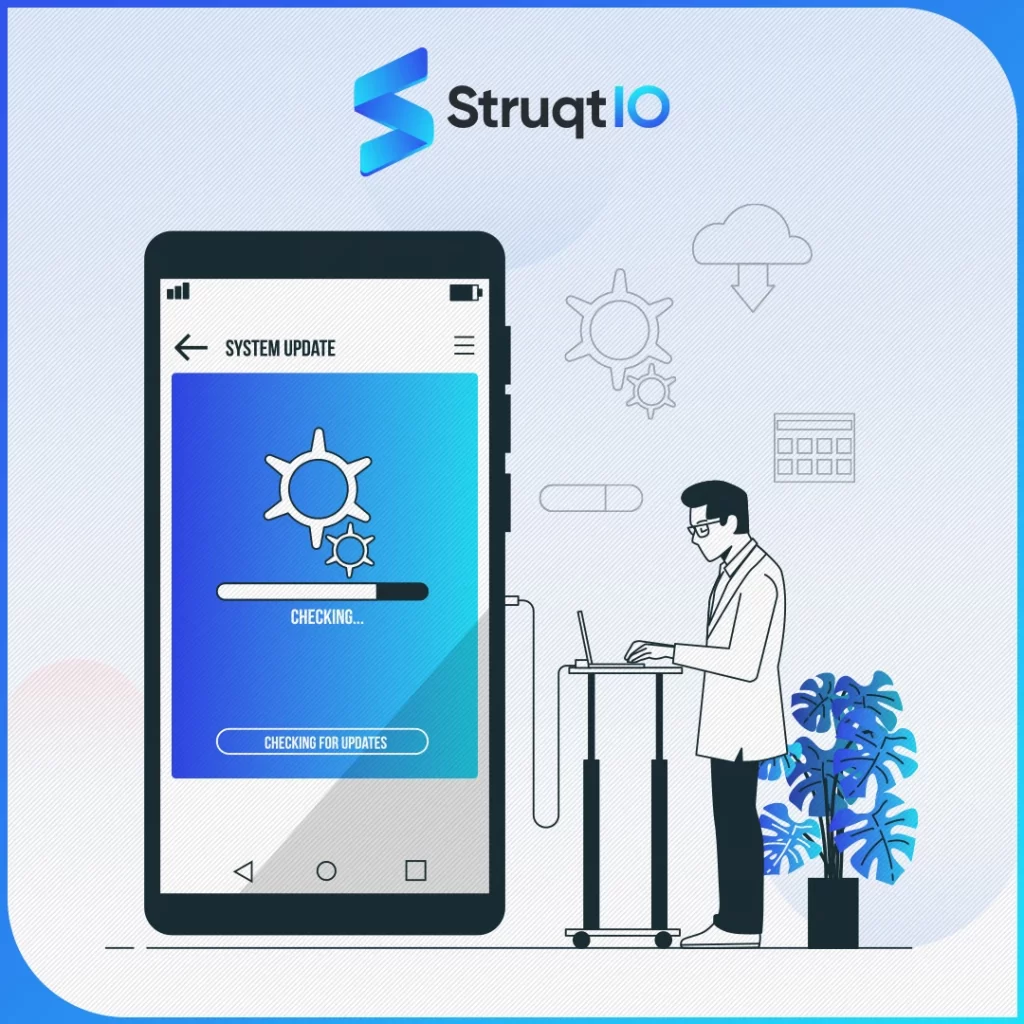
Many people think that final deployment phase is the last stage of the process. Well, it is certainly not, because there are a lot of things you need to do even after the app development and deployment. You need to monitor the status of the application regularly to see how it is functioning in the real world. There are some other things as well that should be noted, so read the below given points to get a complete understanding of the app development process for beginners.
Monitoring App Performance and Analytics
Monitoring app performance and analytics in mobile apps is important for a number of reasons. By monitoring app performance, developers can identify and fix performance issues that may be affecting user experience. This can help to improve the overall quality of the app and make it more enjoyable for users to use.
By collecting analytics data, developers can gain insights into how users are interacting with their app. This information can be used to improve the app’s user experience and make it more engaging for users. It can offer great help in introducing newer versions, as most of the event management companies in Dubai usually follow the same analysis process.
Bug Fixing and Issue Resolution
A lot of times, failure of mobile apps gets reported due to hidden bugs. This is one of those things that often go unchecked from the deployment phase. Those who do not pay attention to QA testing, usually face this problem. It can hamper either one app functionality, or could disrupt all the operations depending upon the severity and interconnection of the bug.
As per the industry standard mobile app guide, it is recommended to check the hidden bugs in the QA testing or deployment phase to avoid later embarrassment. It should be done by checking the functionality of every component separately, as that helps to clear out everything precisely.
Regular Updates and Feature Enhancements
It is being said that only those apps work in the market that manages itself as per the latest trends. This is a fact because we regularly see updates in different types of mobile apps everyday. It is being done to cater the latest trends, and to make app accessible to everyone. From Android to iOS, every application needs update because trends and user requirements change in the market very quickly.
Considering mobile app development for beginners, they should always stay ready to update the apps whenever needed. Generally, it comes into notice automatically once you see advancement in other apps of the same category. You can analyze these updates to plan a certain thing for your own application, as that is termed the correct way to enhance features.
Handling User Feedback and Reviews
Another thing that you need to keep in mind is the regular analysis of user feedbacks. It is an important thing that lets you know about the perspective of users. It describes whether the users are liking your application or they are pinpointing some issues present in it. This way, you can firmly know how well the application is working among the customers.
You can find these reviews on installation page where your app is listed on Play Store or App Store. An application with good functionality generally receives good reviews from the users, whereas ordinary apps do not get any recommendation whatsoever.
Marketing and App Store Optimization (ASO)
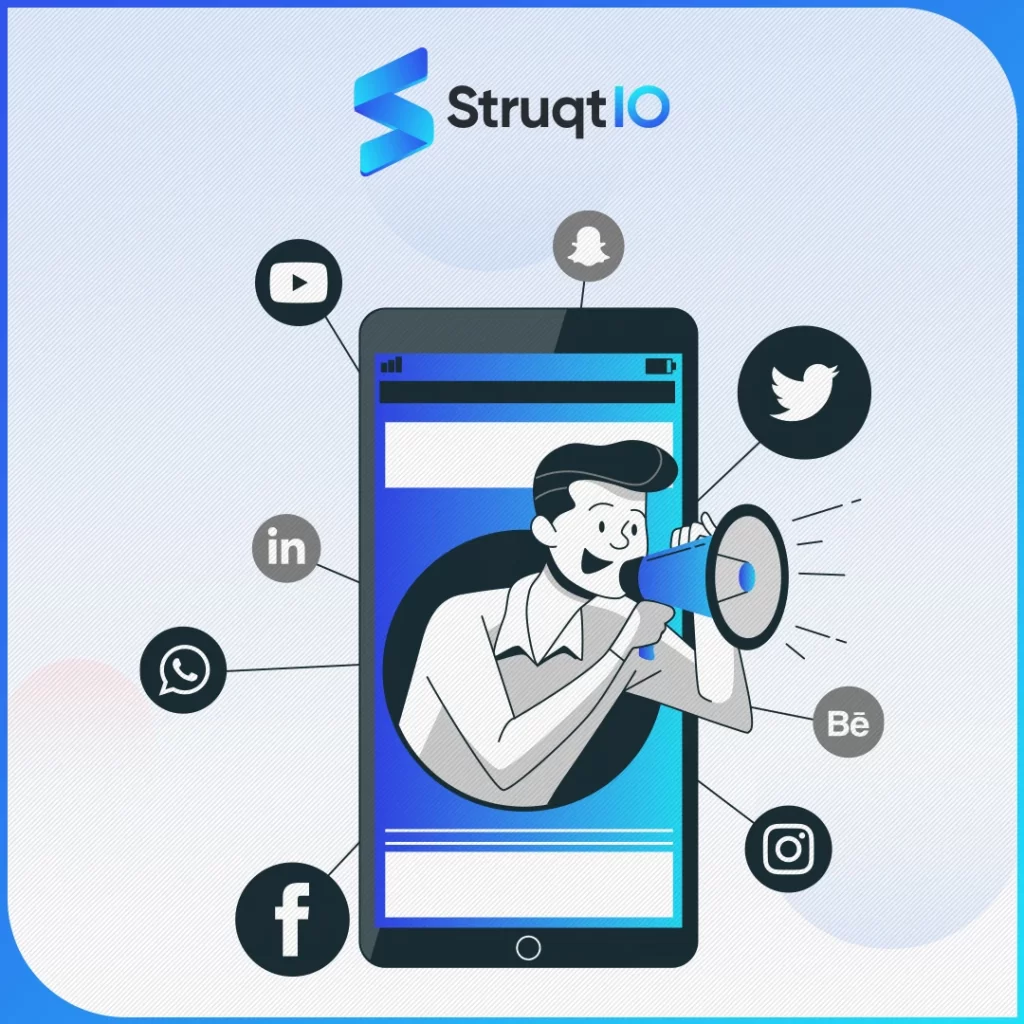
After submission, you need to also pay attention on the marketing and optimization of your mobile apps. This is one of those things that is often not taught in the course of mobile app development for beginners. Many beginners do not think about the apps as a digital product that precisely needs good marketing and PR. And as a result, they usually do not gets the required attention and ultimately fails due to having tough market competition. So, if you want to make your mobile apps successful, try to market it properly using some smart techniques.
Creating an App Store Optimization Strategy
App store optimization (ASO) is the process of optimizing your mobile app to rank higher in app store search results. This can help you get more downloads and users for your app. To do ASO perfectly, you need to first understand your target audience and their needs. Secondly, you need to choose the right keywords that can target the traffic towards your app in the Play Store or App Store.
Besides that, also remember to use high-quality screenshots and videos as stated in the mobile app guide. Screenshots and videos are a great way to show users what your mobile app is like and how it works. Make sure the screenshots and videos are high-quality and representative of your app.
Choosing the Right App Title and Keywords
This particular point is related to SEO which is indeed an important pillar of digital marketing. Normally, people associated SEO with websites, but here, we can see some relation of it with the mobile applications as well. It is best recommended to use keywords that can target traffic towards you application in the Play Store. It is an organic way to get traffic, and it works every time whenever the process is executed accurately.
To rank your app on top of the search results, try to use those keywords that are being searched regularly. You can also use these keywords in the app title, as that also helps search bots to find your mobile application quickly.
Writing Compelling App Descriptions
It is also very important to write a compelling title and description for your mobile application. Your title and description are the first things users will see when they come across your app in the Play Store. Make sure they are clear, concise, and persuasive. The title should be short and catchy, while the description should give users a good overview of what your app is about and what it can do.
Meanwhile, also try to write a description that can grab the attention of users quickly. This can be done by using catchy sentences defining the real value of the application. However, do make sure to use the keywords properly in the description, as that holds the key to bring app on top of the search results.
App Icon Design and Visual Assets
Besides writing a quality content for app description, you must also need to pay attention towards the selection of icon design and visual assets. Both of these things are very important as they come into the notice of users instantly. Whether its Play Store or App Store, icons always play a key role in demonstrating the app strength. It is therefore recommended to pick high-quality visual icons that can offer a strong presentation of your app on two most popular marketplaces of Android and iOS.
If you do not have any idea how these visuals should be designed, take a look at the examples of other apps. It will give you a good idea how an app icon and other visual elements should be designed. You can then craft your own idea according to that to build a design that can perfectly resonate with your application.
Promoting and Marketing Your Mobile App
Last but not the least, try to find ways with which you can promote and market your mobile application properly in the industry. This can be done through various ways, such as using social media, affiliate marketing and more others. You can also partner up with any influencer to get a quick boost in traffic. There are certainly different ways to promote your mobile app, so try to find the best way that fits well according into your ASO plan.
Best Mobile App Development Software to Know About
There are plenty of software you could use to develop mobile applications. It basically depends on the platform you for which you are building an app. Nowadays, there are many tools available in the market that supports cross platform development. You can use some of them, or could pick the specialized ones that offers a large spectrum of dev features and functionalities. Here are some of them defined below.
Kotlin
Kotlin is a modern, statically-typed programming language that has become a popular choice for mobile app development, particularly for Android applications. Officially supported by Google since 2017, Kotlin offers a more concise and expressive syntax compared to Java, allowing developers to write safer and more efficient code. Kotlin is fully interoperable with Java, meaning it can be used alongside existing Java codebases, making it easy for developers to migrate or integrate Kotlin into ongoing projects.
In addition to Android development, Kotlin can also be used for cross-platform mobile app development through Kotlin Multiplatform. This feature allows developers to share code between Android and iOS, reducing the need to duplicate efforts across different platforms. By enabling developers to write common business logic once and deploy it on multiple platforms, Kotlin Multiplatform enhances development efficiency and consistency.
Flutter
Flutter is an open-source mobile app development framework created by Google. Released in 2017, Flutter uses the Dart programming language and offers a rich set of pre-designed widgets that provide a fast, expressive, and customizable UI development experience. Its key feature, the “hot reload” functionality, allows developers to see changes in real-time without restarting the app, significantly speeding up the development process.
Flutter is especially well-suited for cross-platform development, as it allows developers to write one set of code that can be deployed across Android, iOS, web, and desktop environments. This reduces the effort and cost typically associated with maintaining separate codebases for different platforms. In addition to its versatile UI components, Flutter’s growing ecosystem includes a wide variety of plugins and libraries, making it easy to integrate third-party services like APIs, databases, and analytics.
Ionic
Ionic is an open-source mobile app development framework that enables developers to create cross-platform applications using web technologies like HTML, CSS, and JavaScript. Launched in 2013, Ionic is built on top of popular front-end frameworks like Angular, React, and Vue, offering a familiar development environment for web developers transitioning to mobile app development.
One of Ionic’s standout features is its integration with Cordova and Capacitor, which allows developers to access native device functionalities, such as the camera, GPS, and file system, through web-based APIs. This makes it possible to create fully functional mobile apps with native-like performance while leveraging web development skills.
Xamarin
Xamarin is a popular mobile app development framework that allows developers to create cross-platform applications using a single codebase written in C#. Owned by Microsoft, Xamarin integrates deeply with the .NET ecosystem, making it an excellent choice for developers already familiar with Microsoft technologies. Xamarin enables developers to build apps for Android, iOS, and Windows with shared business logic and UI components, significantly reducing the development time and efforts. One of Xamarin’s key features is Xamarin.Forms, a UI toolkit that allows developers to create fully shared user interfaces across different platforms. This approach is highly efficient for apps with simpler, consistent designs, while developers also have the option to use Xamarin.Native for more complex or customized platform-specific interfaces.
FAQs
| How to develop a mobile application? To develop a mobile application, you need to follow some key points. First of all, you need to perform a comprehensive market research, then you need to pick a methodology that can help to build a mobile app. Afterwards, you will need to select respective tools & technologies, and then start development as per the given demands. |
| Which programming language is recommended best for mobile app development? There are different types of languages available in the market for mobile app development. As per the best reviews, Kotlin, Objective-C, Swift and few others are recommended best for mobile app development. |
| Why Java is popular for mobile app development? Java is used to develop different types of software applications. It is also very popular to develop mobile apps, as the language provides tons of features to develop quality applications. |
| Which wireframing tools are recommended best for mobile app development? There are number of wireframing tools you could use for mobile app development. It includes different popular names such as InVision, Axure RP, Fluid UI, Sketch and more others. |
| How many types of testing are recommended for mobile apps? There are different types of tests you could perform to ensure the quality mobile apps. It includes functional testing, compatibility testing, security testing and few more others. |
Read More Interesting Articles:
Final Words
That takes us to the end of this guide in which we have discussed plenty of details about mobile app development for beginners. Starting as a fresher, you need to understand all the points defined in this guide to start your career in mobile app development. It is certainly an in-demand field offering tons of opportunities to the right skilled individuals. This guide has discussed different points that will help you to understand the basics of mobile app development, right from the start to finish.
Meanwhile, if you are looking for a company that can help you to develop advanced mobile applications, get in touch with us today. We will assist you to design quality apps, rightly as per the given demands.

Empower your digital journey with StruqtIO - Your dedicated partner for cutting-edge custom software development, innovation, and digital transformative solutions. Harness the power of technology to elevate your business and redefine your digital landscape today.
